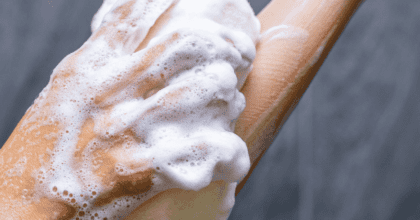82% of UK men take responsibility for cleaning the loo
It seems the tide has turned in the nation’s smallest room, latest research on Toilet Cleaning, Bleaches and Disinfectants in UK reveals that Britain’s men are brushing up their toilet cleaning skills.
According to new research from Mintel, the number of men saying they take some responsibility for cleaning the toilet has risen from 78% in 2016 to 82% in 2017. Meanwhile, the number of men reporting to take some responsibility for buying toilet cleaning products has also seen an upturn, increasing from 78% in 2016 to 84% in 2017.
While Britain’s men are raising the stakes in the toilet cleaning department, women are still bearing the brunt of the task. Almost three quarters (72%) of women claim to be solely responsible for cleaning the toilet, compared to less than half (47%) of men, while 35% of men say they share the responsibility of cleaning the loo, compared to 19% of women.
Richard Hopping, Household and Brand Analyst at Mintel, said:
“There is still a gender discrepancy when it comes to buying and using toilet cleaning products, with women more likely to take sole charge and men more likely to share the task. However, there are signs of a shift in responsibility, with a rise in overall responsibility for buying and using products being driven by greater engagement from men.”
When it comes to the nitty gritty of cleaning the lav, the toilet seat is the most frequently cleaned part of the toilet. As many as 20% of Brits clean the toilet seat once a day or more, making these thrones fit for a queen. Regionally, daily seat cleaning peaks in London at 24%, while by contrast just 15% of those in East Midlands and South West are daily toilet seat cleaners. Around one in 20 (4%) admit to cleaning the toilet seat once a month or less, rising to one in 10 (11%) in Wales.
Beyond cleaning the seat, Mintel research finds that the next most frequently cleaned part of the toilet is the lid, which is cleaned on a daily basis by an enthusiastic 15% of Brits. This is followed by the toilet handle at 14%. Despite the relatively high daily cleaning of the handle, over one in twenty (6%) admit to never cleaning it. Finally, a fastidious one in 10 (8%) Brits clean behind and around the outside of the toilet once a day or more.
“While the seat and lid are cleaned on a regular basis, the area of the toilet most likely never to be tackled is the toilet handle, which suggests that people may forget about this part of the toilet despite its regular contact with human hands. This could be an area for brands to target with smaller wipes that can be used quickly and regularly without the need for any dispensing of a product.” Richard adds.
Overall, half (47%) of people who clean their home rank cleaning the toilet in their top three most disliked cleaning tasks. Only cleaning the oven (67%) ranks higher in terms of least liked jobs.
However, it seems that many are looking for new methods for flushing out germs in the loo. Just under one quarter (23%) of Brits who are responsible for cleaning and buying toilet cleaning products say they pay attention to tips on social media showing alternative methods for cleaning the toilet.
Retail value sales of products in the toilet cleaning and care, bleaches and disinfectants category fell for the third year in a row down from £287 million in 2013 to an estimated £265 million in 2016, wiping 8% off the value since 2013. This year sales are expected to continue to decline, falling to £263 million.
Over the next five years the market is forecast to remain stagnant, with a forecast value of £262 million in 2021. The disinfectants segment was the strongest performer in this category during the last year, increasing value sales by 22% from £30.2 million in 2015 to £36.8 million in 2016. By contrast, the household bleaches sector saw the biggest decline, dropping by 9% in the past year alone to £114.7 million.
“Concern over germs is one of the main drivers of cleaning around the home, which means there is likely to be a natural inclination towards using disinfectants. But disinfectants also possess an advantage over other germ-killing products like bleaches and antibacterial sprays in the shape of fragrance, which is becoming a more influential factor in purchasing decisions. The ubiquity of bleaches and the commoditised nature of the product mean that consumers are more likely to be able to trade down if they so desire to own-label versions, or seek out bleaches on promotion.” Richard concludes.
Press review copies of the Toilet Cleaning, Bleaches and Disinfectants UK 2017 report and interviews with Richard Hopping, Household and Brand Analyst at Mintel, are available on request from the press office.
-
Mintel StoreGet smart fast with our exclusive market research reports, delivering the latest data, innovation, trends and strategic recommendations....View reports
-
Mintel LeapMintel Leap is a revolutionary new AI-powered platform that will transform your research process....Book a demo
































